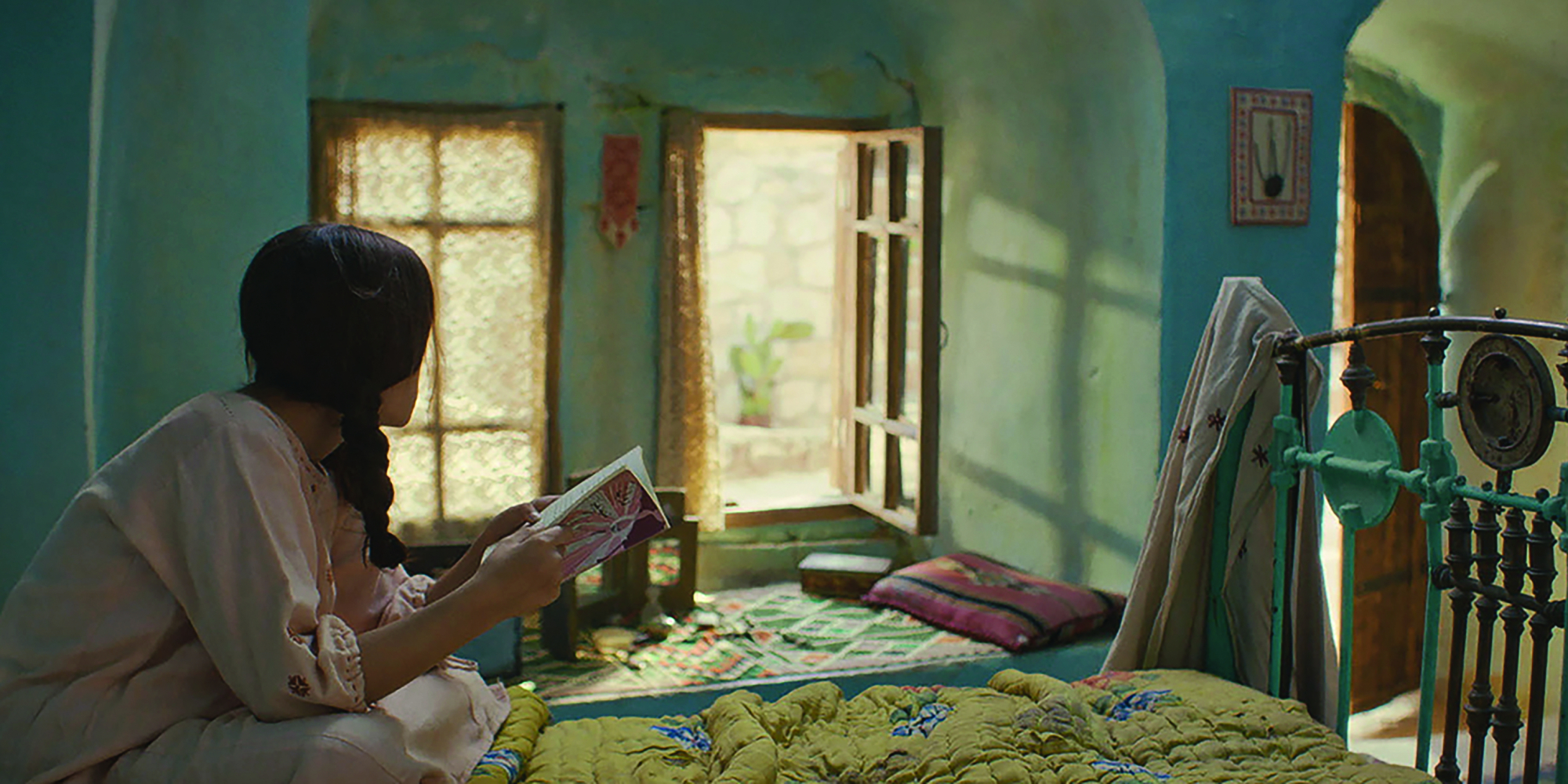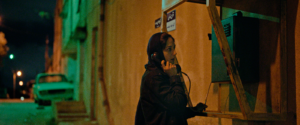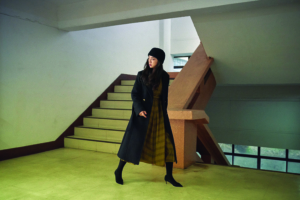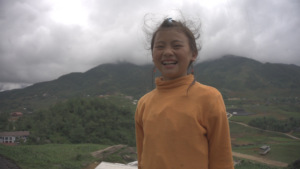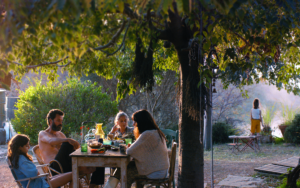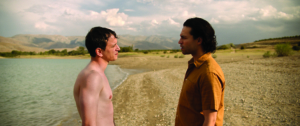Once upon a time, there was a girl who lived in Palestine. The girl survived the Israeli conquest of 1948 – for Palestinians, the Nakba, or ‘the catastrophe’ – by hiding out in a cellar, later managing to flee to Syria. There, she met another girl, and told her the story of how she made it through the Arab–Israeli conflict alive. ‘Then this other girl grew up, got married, had a child, and this child was me.’
So recounts Darin J Sallam, the Jordanian filmmaker who has made her feature debut with Farha (2021), a film based on this tale, which was handed down to her by her mother and has so much resonance in her own life. Sallam’s father was a Palestinian who survived the Nakba. ‘He was a child, and he made it to Jordan,’ she says. ‘I exist today because he survived.’ As such, the telling of wartime stories – the preservation of a marginalised history through oral tradition – was something that was important in her family’s household in Amman.
‘I [was raised] listening to many stories about Palestine, from my grandparents and my parents,’ Sallam offers. These were tales of surviving the war, and of the horrors enacted on the Palestinian populace by the advancing Israeli army.[1]Indiscriminate massacres were committed by Israeli soldiers in a number of villages during the 1947–1949 Palestine War. See, for example, Adam Raz, ‘Classified Docs Reveal Massacres of Palestinians in ’48 – and What Israeli Leaders Knew’, Haaretz, 9 December 2021, <https://www.haaretz.com/israel-news/.premium.HIGHLIGHT.MAGAZINE-classified-docs-reveal-deir-yassin-massacre-wasn-t-the-only-one-perpetrated-by-isra-1.10453626>, accessed 14 February 2022. But they were also about life before wartime, the beautiful homes and communities that existed prior to the Nakba. ‘They had a life, a very beautiful life, which they were then deprived of,’ Sallam says, the memories of her grandparents and parents colouring her own formative memories. ‘I grew up with their remembering, their wishing to go back.’
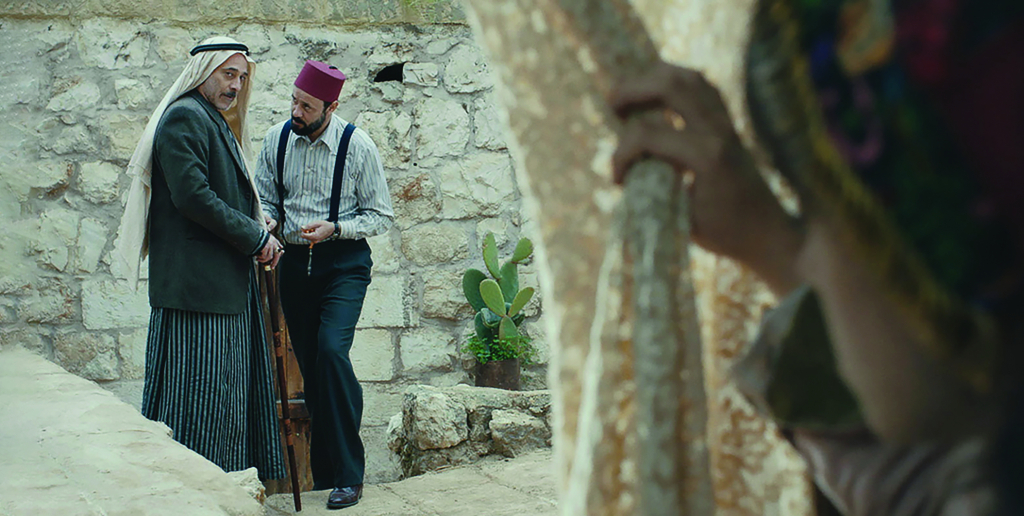
When Sallam was in film school, she was given that most universal writing advice: write what you know. So, in 2011, she wrote a treatment for a film about a young Palestinian girl hiding out in a cellar while an invasion happens around her. In 2016, she wrote a proper first draft, and continued to work on the screenplay over the years. ‘Growing up, it got stuck in my mind,’ Sallam says. ‘I kept thinking of this girl locked inside this room. I’m claustrophobic, so I really felt her plight. I always had the urge to tell her story.’
Farha is a personal film about a singular girl’s struggle; an obvious political allegory for a grander catastrophe; a paean for a culture and innocence lost; and a film that … defiantly keeps suppressed history and memory alive.
Farha is, in turn, a personal film about a singular girl’s struggle; an obvious political allegory for a grander catastrophe; a paean for a culture and innocence lost; and a film that functions as part of a storytelling tradition, one that defiantly keeps suppressed history and memory alive. ‘It’s re-creating this time, these memories, these people, their lives, and their happy and sad moments,’ Sallam offers. ‘It’s not explicitly a story about the tragedy of the Palestinians in 1948 […] It’s a close-up on this girl’s life, and the war is there in the background.’
The film opens in a rural idyll: by a river and waterfall outside a mountain village, girls pick figs, splash, laugh; Farha (Karam Taher), by contrast, is entranced by the book she is reading. While the other girls speak of marriage, Farha wants to go to school – even though her conservative father (Ashraf Barhom), the local mayor, wants to marry her off to her gormless cousin Nasser (Sief Ghanem). There’s no school for girls in the village, but there is one in the city, where her cousin/bestie Farida (Tala Gammoh) lives with her urbane, upwardly mobile family; the two girls daydream about going to school together. These opening sequences, by rivers in dells and groves – shot by DOP Rachel Aoun in a wholesome, dusky glow – convey a kind of prelapsarian purity: Palestine before the fall. ‘In the beginning, in the first act, we inhabit [Farha’s] naivety,’ Sallam says. ‘[Then] throughout the film we see her changing, losing her naivety and coming to terms with reality.’
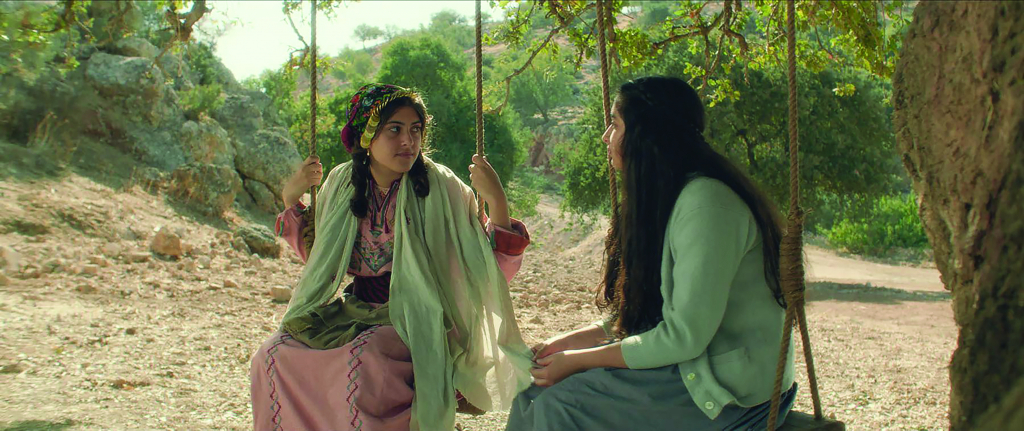
The first signs of trouble – for a contemporary audience that knows that an opening intertitle reading ‘Palestine, 1948’ is an ill omen – come with the evacuation of British troops; as they leave, local kids jeer and throw rocks at them. By the time Farha is back home, she’s already overhearing her dad and uncle (Firas Taybeh) talking about the unsafe situation and the futility of hoping to mount a military defence (‘All we have are a few rusted weapons and dud bullets’), and eavesdropping on clandestine night-time meetings of resistance fighters in her family home. The leader of the local resistance, Abu Nimer (Mostafa Baker), warns that unless locals take up arms, their fate will be sealed: ‘In the end, your land will turn into ashes.’
Sure enough, the peace of this rural idyll is soon shattered. We hear the invasion first: the sounds of explosions, gunfire, screams, the roar of engines, Israeli loudspeakers blasting out propaganda in Arabic. Sequences of invading armies rounding up locals are familiar in cinema – especially in depictions of the Third Reich – but showing such images from this vantage point is far rarer; perhaps the only precedent is The Time That Remains (Elia Suleiman, 2009).[2]See Anthony Carew, ‘Laughter Through Tears: Palestine and Self-portraiture in the films of Elia Suleiman’, Metro, no. 206, 2020, pp. 76–83. ‘There’s not that many films that show 1948,’ Sallam says. ‘I wanted to take this opportunity to show this other side of the narrative. It’s always talked about from the Israeli side, but the Palestinian side has been ignored in cinema.’
After sequences set in the tumult of war – amid fire and detonations, fleeing citizens and mounting chaos – the film suddenly, one act in, comes to a sudden halt. While digging out hidden weapons and ammunition, Farha’s father commands her to stay in a cellar, pressing a dagger into her hands. He locks her in, even plugging cracks between the bricks with mud, plunging his daughter into darkness. We stay with Farha in this space as the war suddenly turns to sounds, from distant rumbles of exploded ordnance to the intimate sounds of footsteps above and the murmured voices of men. It’s a radical change of pace – from action to stillness, light to darkness, colours to blacks. ‘[It] was important to me,’ Sallam relates, ‘to create this contrast between the beginning, where it’s a village full of life and colours, [and] when she goes into that room […] in the dark, and she’s left all alone.’
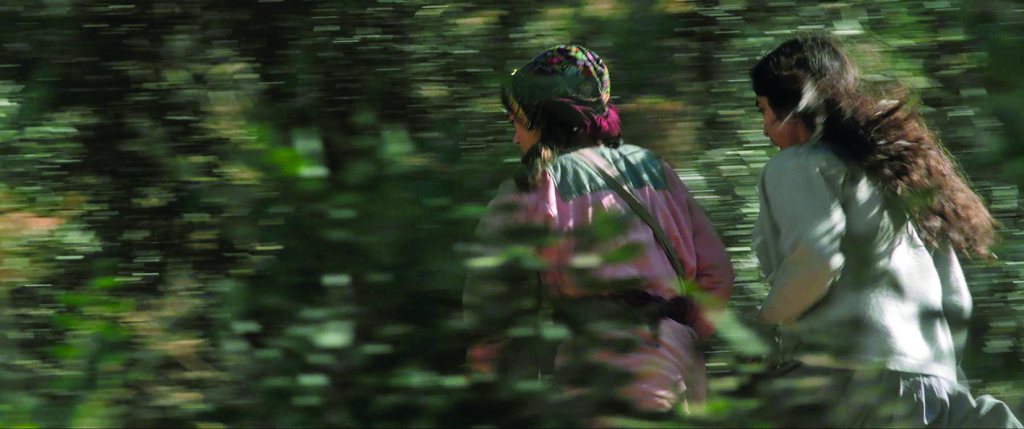
Farha then turns into a survival movie: its titular heroine must try to find a way to kill boredom, collect water, stay warm and ultimately escape the place in which she’s trapped. Anchoring the film’s unfolding story to the perspective of one character, Sallam keeps the camera within this cellar so as to ‘see this experience through her eyes, from her point of view’. Of course, that brought with it another challenge for the filmmaker. ‘I was always concerned: what if people get bored?’ Sallam admits. ‘I wanted the audience to stay engaged all the time.’
But this is only a brief stint of boredom, of respite from the war. We hear a family seeking refuge in Farha’s house, the mother in the middle of childbirth. When the newborn baby cries out, the hiding family is discovered by Israeli soldiers, working with a hooded prisoner (a collaborator who, we suspect, is Farha’s father). They search the house for weapons, find none, and then execute the family in cold blood anyway. As the soldiers leave, they demand that the lowliest member of their troop stay behind and kill the baby, but he can’t bring himself to do it. These scenes are either shown (or not shown) in glimpses through cracks in the door or heard as the camera hides in darkness – the cruelty of the soldiers and the horrors of war imagined more than depicted.
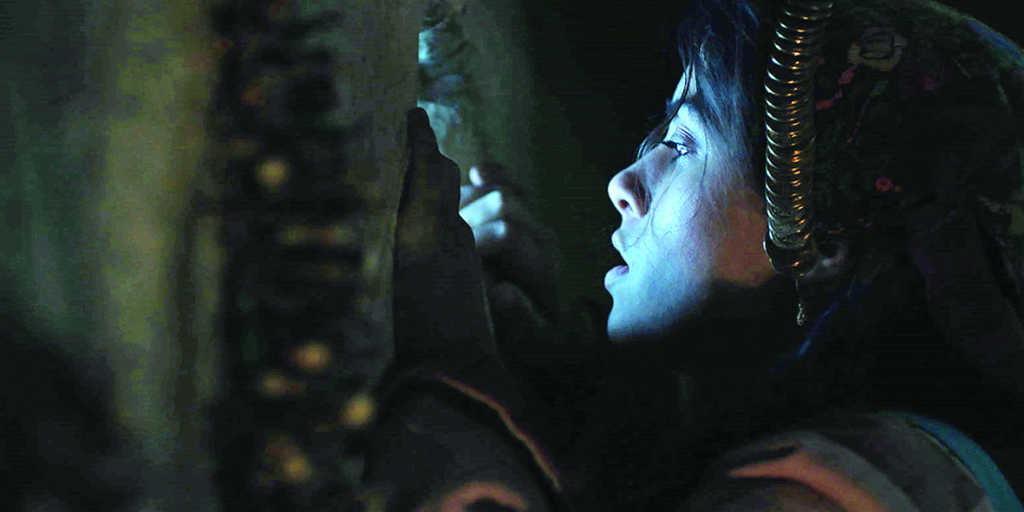
Hoping to save not only her own life but also that of the crying infant left outside, Farha desperately tries to break down the door without success. Much later, she finds a gun and bullets hidden in sacks of lentils, and fires at the door until it opens. The world outside is stilled, peaceful – a spell that is broken only by the sight of the baby’s dead body, surrounded by swarming flies. The invasion has moved on, leaving her beloved village behind as a smoked-out ruin. Crestfallen, Farha returns to the waterfall where the film opened – this time, using it to wash away the dirt, blood and horror of the war – and leaves the village via the same road the evacuating English soldiers took, walking towards the sunset.
A closing title card informs us that Farha never saw her father again, but escaped into Syria and told her story – which takes us back to Farha’s genesis as a piece of cinema. ‘My intention was never just to count Farha as one of the 700,000 who were forced into exile at that time; I wanted to focus on her personal journey,’ Sallam says, declaring her film to be a universal story of human rights rather than just a cry of Palestinian rage. Personalising the horrors of the Nakba is a way into this distant, historical time; doing so by showing the lost innocence of a child amplifies the empathy.
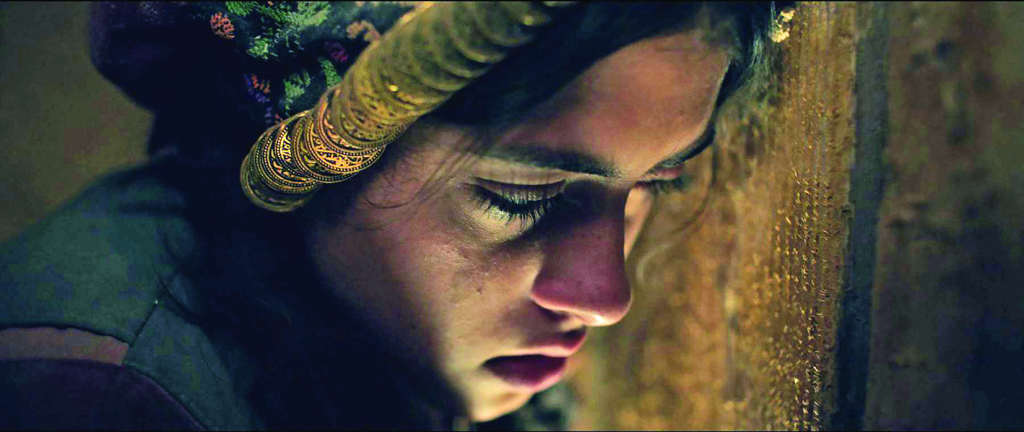
Taher, the film’s fourteen-year-old lead, had never acted before; she was chosen at the end of a long casting call (‘In the Arab region, it’s not familiar to have child actors,’ Sallam explains) in part because her face reminded the director of those she’d seen in archival photos of Palestinians from the early twentieth century. Building up to the shoot took months of preparation: ‘I wanted to make her look like she was from 1948: the way she moves; the way she talks; the accent,’ Sallam says. The director boasts that she doesn’t ‘like to take the easy path’: working with non-professionals went hand in hand with other difficulties such as a period shoot, a static location, filming in low light and getting a film made in Jordan to begin with.
Between 2013 and 2018, the Jordan Film Fund was placed on hiatus, leading to a sharp decline in the country’s feature film production.[3]See ‘Jordan Film Fund Resumes After Five-year Hiatus’, BroadcastPro Middle East, 7 March 2018, <https://www.broadcastprome.com/news/jordan-film-fund-resumes-after-five-year-hiatus/>, accessed 25 February 2022. ‘It’s the usual answer: finance,’ Sallam sighs, when talking about the instability and struggles of making a film in her home country (Farha itself was a co-production between Jordan, Saudi Arabia and Sweden). It’s a sad situation, she says, because Jordan is full of stunning landscapes (including rural mountain areas that stood in for Farha’s bucolic Palestinian village), rich history and, of course, its own stories, including those of the diaspora.
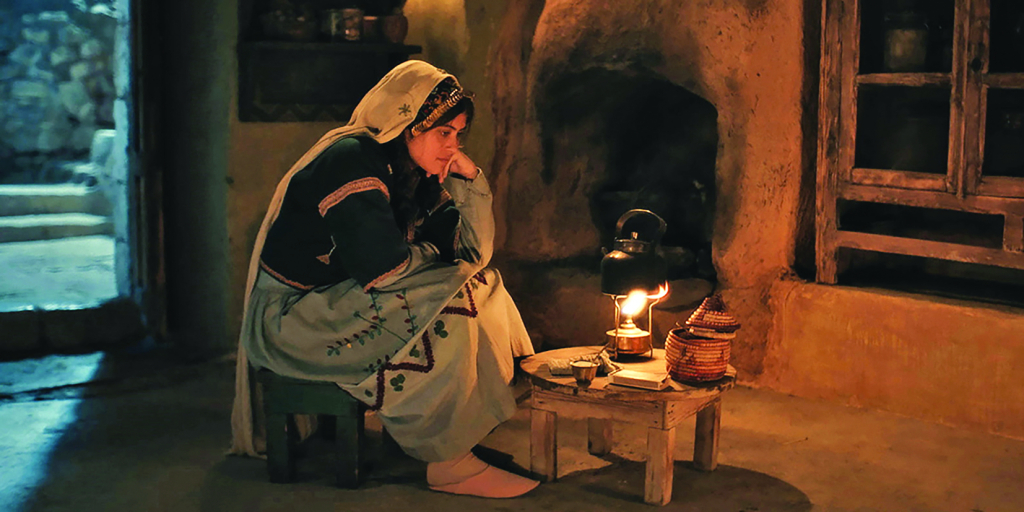
Farha is one of those stories: one of thousands from the Palestinians who were forced into exile, who saw their homeland seized, occupied, renamed. Sallam always thought of her debut feature as a personal story, both in terms of its singular focus – on ‘one person, and how her life was changed and her dream was changed because of this conflict’ – and its ties to her own life. But the filmmaker knows all too well how politically loaded Farha is, knows that this is how the world will see it.
‘Of course it will be treated as a political statement,’ Sallam shrugs.
Any story we tell is, at the end of the day, related to politics. Even if it’s a love story, it’s political. But especially in this case: because it talks about a very specific event [that] changed the entire Arab region, and that can still be felt to this day.
Endnotes
| 1 | Indiscriminate massacres were committed by Israeli soldiers in a number of villages during the 1947–1949 Palestine War. See, for example, Adam Raz, ‘Classified Docs Reveal Massacres of Palestinians in ’48 – and What Israeli Leaders Knew’, Haaretz, 9 December 2021, <https://www.haaretz.com/israel-news/.premium.HIGHLIGHT.MAGAZINE-classified-docs-reveal-deir-yassin-massacre-wasn-t-the-only-one-perpetrated-by-isra-1.10453626>, accessed 14 February 2022. |
|---|---|
| 2 | See Anthony Carew, ‘Laughter Through Tears: Palestine and Self-portraiture in the films of Elia Suleiman’, Metro, no. 206, 2020, pp. 76–83. |
| 3 | See ‘Jordan Film Fund Resumes After Five-year Hiatus’, BroadcastPro Middle East, 7 March 2018, <https://www.broadcastprome.com/news/jordan-film-fund-resumes-after-five-year-hiatus/>, accessed 25 February 2022. |
